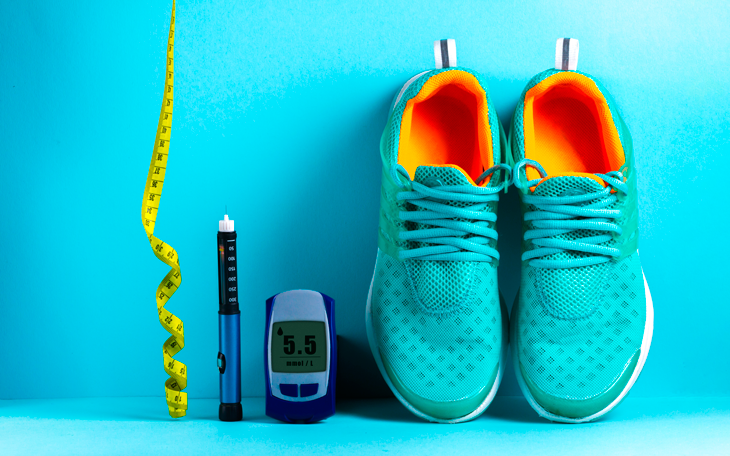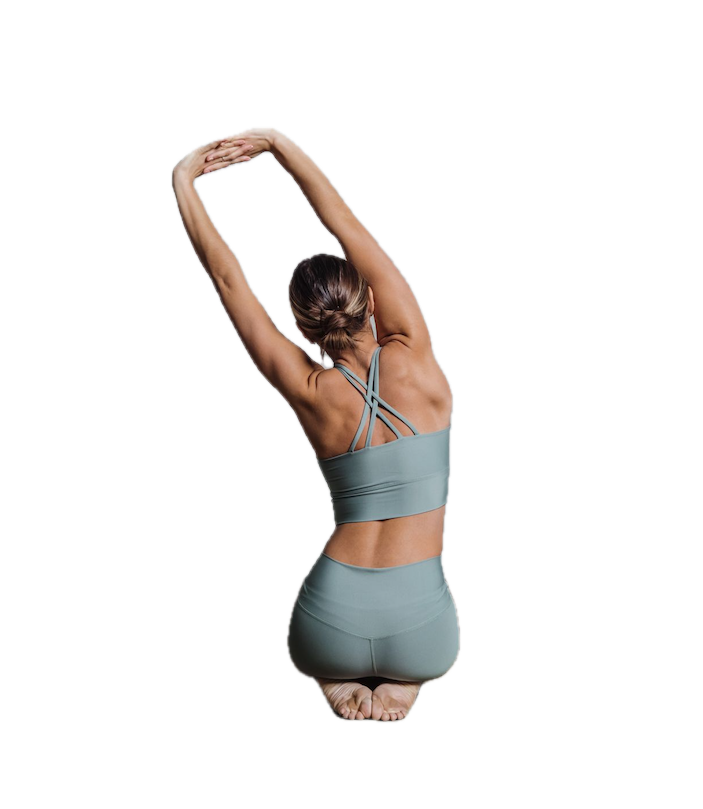
How to Lose Weight After the Holidays: Practical Tips to Get Back on Track
The holidays are a time for celebration, connection, and often overindulgence. It’s normal to enjoy festive treats, but once the celebrations are over, many of us want to return to healthier habits and shed any extra weight gained. In this article, we’ll share effective strategies for losing weight healthily after the holidays.
1. Rebalance Your Diet
The first step is to return to a balanced and nutritious eating routine. Avoid extreme diets or prolonged fasting, as these can lead to muscle loss and the infamous “yo-yo” effect. Focus on:
- Increasing your vegetable intake: Packed with fiber, they help control appetite.
- Prioritizing lean proteins: Such as chicken, fish, eggs, or legumes, to stay satiated.
- Reducing processed foods: Opt for natural, minimally processed options.
- Staying hydrated: Drink water throughout the day to support detoxification.
2. Restart or Begin an Exercise Routine
Physical activity is key to burning calories and regaining fitness. If you took a break during the holidays, start gradually. Consider these options:
- Home workouts: Convenient and adaptable to your fitness level.
- Daily walks: A simple way to get moving and boost metabolism.
- Strength training: Builds muscle mass, which increases metabolic rate.
Consistency is crucial. Set fixed workout times and choose activities you genuinely enjoy.
3. Set Realistic Goals
Avoid setting overly ambitious targets, like losing several kilos in a week. Aim for small, achievable goals, such as losing 0.5 to 1 kg per week. Celebrate each milestone to stay motivated.
4. Prioritize Quality Sleep
Sleep plays a vital role in weight loss. Less than 7-8 hours of sleep per night can increase cortisol levels, a hormone linked to weight gain. Establish a consistent sleep routine and avoid distractions like electronic devices before bed.
5. Let Go of Guilt
It’s important to remember that occasional indulgences are part of a balanced life. Instead of feeling guilty about overindulging, focus on resuming healthy habits. Consistency over time matters more than occasional slip-ups.
6. Seek Professional Support
If you find it challenging to create a plan on your own, consider seeking help from a nutritionist or personal trainer. These professionals can tailor a plan to your specific needs and goals.
Conclusion
Losing weight after the holidays doesn’t have to be complicated. With a balanced and consistent approach, you can get back on track and feel better in no time. At Treino.eu, we offer resources and programs to help you achieve your fitness goals. Start today and take the first step toward a healthier you!

The Best Foods for Muscle Recovery
Muscle recovery is one of the key pillars of a successful workout plan. After an intense exercise session, your body requires specific nutrients to repair damaged muscle tissue, reduce inflammation, and replenish energy stores. Choosing the right foods can make all the difference in this process.
In this article, we explore the best foods to optimize muscle recovery and their benefits.
1. Eggs
Eggs are an excellent source of complete protein, containing all the essential amino acids needed for muscle synthesis. They are also rich in vitamin D, which supports bone health.
Tip: Enjoy boiled eggs or an omelet after your workout to maximize their benefits.
2. Fatty Fish (Salmon, Sardines, Mackerel)
Rich in omega-3 fatty acids, fatty fish helps reduce muscle inflammation. It’s also an excellent source of protein and B vitamins.
Tip: Include a serving of grilled salmon with vegetables in your post-workout dinner.
3. Sweet Potatoes
Sweet potatoes are rich in slow-digesting carbohydrates, essential for replenishing muscle glycogen stores. They also contain vitamin A and antioxidants.
Tip: Pair sweet potatoes with a protein source like grilled chicken for a balanced meal.
4. Berries
Strawberries, blueberries, and raspberries are loaded with antioxidants that combat oxidative stress caused by exercise. They are also a natural source of simple carbohydrates.
Tip: Make a smoothie with Greek yogurt and berries for a quick and nutritious option.
5. Chicken
Chicken is a classic muscle recovery food due to its high content of lean protein. It also provides niacin, a vitamin essential for energy metabolism.
Tip: Combine chicken with brown rice and vegetables for a complete meal.
6. Greek Yogurt
Greek yogurt is rich in casein and whey, two proteins that promote muscle recovery. It also provides calcium and probiotics, which are important for overall health.
Tip: Add nuts and honey to Greek yogurt for an ideal snack.
7. Spinach
Spinach contains magnesium, a mineral that supports muscle function and reduces cramps. It’s also rich in antioxidants.
Tip: Make a salad with spinach, walnuts, and feta cheese to complement your main meal.
8. Nuts and Seeds
Almonds, walnuts, and chia seeds are sources of healthy fats that help reduce inflammation and provide sustainable energy.
Tip: Snack on a handful of nuts between meals.
9. Quinoa
Quinoa is a superfood packed with plant-based protein and complex carbohydrates. It also contains iron, which aids in oxygen transport to muscles.
Tip: Substitute rice or pasta with quinoa in your meals.
10. Water and Sports Drinks
Hydration is essential for muscle recovery. Water replenishes fluids lost during exercise, while sports drinks can provide important electrolytes.
Tip: Stay hydrated throughout the day, and consider a sports drink after long training sessions.
Conclusion
Muscle recovery requires not just adequate rest but also a balanced diet. Incorporating the foods mentioned above into your meals can help improve performance, reduce recovery time, and prevent injuries.
For more tips on nutrition and training, check out the blog.

Home Workouts for Kids: How to Get Started
Parents are increasingly looking for ways to keep their children active and healthy, especially at home. Home workouts for kids are an excellent way to promote a healthy lifestyle, enhance motor development, and, of course, strengthen family bonds. In this article, we explore how to start exercising with children safely and enjoyably.
Benefits of Exercise for Kids
Before diving in, it’s important to understand the benefits of exercise for children:
- Improves Motor Skills: Activities like jumping, running, and balancing help develop essential motor skills.
- Strengthens Muscles and Bones: Light resistance exercises and natural movements contribute to healthy growth.
- Boosts Mental Well-being: Physical activity helps reduce stress, improves mood, and enhances focus.
- Encourages Healthy Habits: Establishing an exercise routine early prepares children for an active future.
How to Structure Home Workouts
Here are some steps to create a suitable program for kids:
1. Make It Fun
Kids love to play, so exercises should be presented as games. Use music, friendly competitions, or creative challenges to keep them engaged.
2. Set a Regular Schedule
Having a fixed time for physical activity helps establish a routine. For example, after school or before dinner.
3. Adapt Exercises to Age
- Ages 3-5: Focus on simple movements like jumping, balancing, and imitation games.
- Ages 6-9: Introduce circuits with varied movements (e.g., squats, short sprints).
- Ages 10-12: Incorporate more structured activities like light resistance and coordination exercises.
4. Create Safe Spaces
Ensure the workout area is free from hazards. A mat or soft surface can help prevent injuries.
Examples of Exercises
- Jumping Jacks: Great for warming up and improving coordination.
- Squats: Strengthen the legs and promote stability.
- Running in Place: Ideal for boosting heart rate.
- Tree Balance: Stand on one foot for a few seconds, alternating legs.
- “Simon Says” Fitness: A game where parents lead different movements.
Tips for Parents and Caregivers
- Lead by Example: Joining in the activities is a great way to motivate kids.
- Be Patient: Respect each child’s pace.
- Celebrate Achievements: Small compliments make a big difference.
Conclusion
Starting home workouts for kids is a valuable decision with long-term positive impacts. With creativity, safety, and consistency, you can turn exercise into a memorable and beneficial experience for the whole family.

The Importance of Stretching in Daily Life
Stretching is often associated with warming up or cooling down after exercise, but its significance goes far beyond that. Incorporating stretches into your daily routine can bring substantial benefits to both physical and mental health.
Benefits of Stretching
- Improved Flexibility: Regular stretching enhances joint range of motion, making daily activities easier and reducing the risk of injury.
- Reduced Muscle Tension: Stretching relaxes tight muscles, alleviating common aches and pains caused by poor posture or repetitive strain.
- Promotes Mental Well-Being: Engaging in stretching exercises helps reduce stress by stimulating blood circulation and encouraging relaxation.
- Better Posture: By easing muscle tension, stretching contributes to proper body alignment and posture improvement.
Types of Stretching
- Static Stretching: Involves holding a position for several seconds. Ideal for post-workout routines.
- Dynamic Stretching: Controlled movements that prepare the body for physical activity by increasing muscle temperature.
- PNF (Proprioceptive Neuromuscular Facilitation): A more advanced technique combining muscle contraction and relaxation, often performed with a partner or professional.
Tips for Incorporating Stretching into Your Routine
- Dedicate 10-15 minutes daily to stretching major muscle groups.
- Focus on Breathing: Inhale deeply and exhale as you stretch.
- Be Consistent: Benefits come with regular practice.
Conclusion
Stretching is a simple yet powerful practice that promotes a more active and pain-free life. Regardless of age or activity level, adding stretching to your daily routine can significantly improve your overall well-being.
Prioritize your health with smart stretching choices. Learn more about fitness and wellness at www.treino.eu.
Suggested Blog Topics:
- “Home Workouts for Kids: How to Start?” Tips for creating healthy and fun routines for children.
- “Top Foods for Muscle Recovery” A guide to choosing foods that accelerate post-workout recovery.
- “The Importance of Hydration for Physical Performance” Exploring the impact of water and electrolytes on fitness results.
- “Mindfulness and Exercise: Enhancing Results Through Body-Mind Connection” Strategies to improve focus and the quality of your workout.
- “Quick and Effective Workouts: Maximizing Results in 20 Minutes” Plans for those with limited time but big fitness goals.

The Benefits of Strength Training for Metabolic Health
Strength training has emerged as more than just a tool for building muscle; it’s a key strategy for improving metabolic health and preventing chronic diseases. This form of exercise offers profound benefits that positively impact the body’s internal systems, making it a cornerstone of a healthy lifestyle.
What Is Metabolic Health?
Metabolic health refers to the efficient functioning of processes like blood sugar regulation, lipid balance, and blood pressure control. Good metabolic health reduces the risk of conditions such as type 2 diabetes, metabolic syndrome, and cardiovascular diseases.
How Does Strength Training Enhance Metabolic Health?
- Improves Insulin Sensitivity Strength training increases the muscles’ ability to absorb glucose, leading to better blood sugar control. This is critical in preventing and managing type 2 diabetes.
- Boosts Basal Metabolic Rate (BMR) By building muscle mass, strength training raises the body’s resting energy expenditure. This helps with weight loss and maintenance.
- Reduces Visceral Fat Visceral fat is a major risk factor for metabolic disorders. Studies have shown that strength training effectively decreases this harmful type of fat.
- Regulates Metabolic Hormones Resistance training helps balance hormones like insulin and cortisol, promoting better overall metabolic health and reducing stress on the body.
Evidence-Based Benefits
Scientific research strongly supports the benefits of strength training for metabolic health. A study published in the Journal of Diabetes Research found that regular resistance training reduces inflammation markers and improves insulin sensitivity, even in individuals at high risk for metabolic disorders.
How to Start Strength Training
- Consult a Professional: Before starting, seek guidance from a qualified trainer.
- Begin Gradually: Start with simple exercises and lighter weights, progressively increasing intensity.
- Stay Consistent: Aim for at least two to three strength training sessions per week.
- Focus on Technique: Proper form is crucial to avoid injuries and maximize results.
Conclusion
Strength training is not only about building a stronger body but also about fostering better internal health. It’s a powerful tool to enhance metabolic health, prevent chronic diseases, and improve overall quality of life. Whether you’re a beginner or an experienced fitness enthusiast, incorporating strength training into your routine can transform your health journey.
Take the first step today and unlock the benefits of strength training! Visit www.treino.eu to find your ideal trainer and program.

The Role of Nutrition in Managing Diabetes
Diabetes is a chronic condition affecting millions of people worldwide, characterized by elevated blood sugar (glucose) levels. There are two main types: type 1 diabetes, an autoimmune condition where the body cannot produce insulin, and type 2 diabetes, often associated with factors like excess weight, physical inactivity, and poor diet. Regardless of the type, nutrition plays a vital role in its prevention and management.
The Importance of a Balanced Diet
A balanced diet helps regulate blood sugar levels, reducing the risk of complications such as cardiovascular issues, neuropathy, and kidney failure. Making the right food choices can also improve insulin sensitivity and overall health.
Nutritional Strategies for Diabetes Management
- Meal Planning: Distributing meals throughout the day is crucial to avoid blood sugar spikes. Regular meal intervals promote better glucose control.
- Focus on Complex Carbohydrates: Opt for whole grains like brown rice, oats, quinoa, and sweet potatoes, which are absorbed more slowly and help stabilize blood sugar levels.
- Adequate Fiber Intake: High-fiber foods, such as vegetables, fruits with skin, and legumes, slow glucose absorption and help control appetite.
- Avoid Simple Sugars: Minimize or eliminate sugary foods, soft drinks, and processed products with added sugar.
- Healthy Fats: Choose healthy fats like olive oil, avocado, nuts, and omega-3-rich fish to lower the risk of cardiovascular diseases.
- Moderate Protein Consumption: An appropriate protein intake is essential, but for those with kidney complications, protein consumption should be adjusted under professional guidance.
The Role of Hydration
Staying hydrated is essential, especially for people with diabetes. Water is the best choice, as it helps eliminate excess glucose through urine.
Personalized Nutrition
Every person with diabetes has unique needs. Collaborating with a nutritionist is key to creating a tailored meal plan that aligns with health conditions, personal preferences, and individual goals.
The Benefits of Exercise Alongside Nutrition
Combining a balanced diet with regular exercise enhances diabetes control. Physical activity improves insulin sensitivity and supports weight management—both crucial factors for blood sugar regulation.
Conclusion
Nutrition is a cornerstone of diabetes management, contributing to better quality of life and preventing complications. Paired with an active lifestyle and regular medical check-ups, it can make a significant difference in the lives of people with diabetes.
Suggested Reading: Learn more about how exercise can support diabetes management in our article “Exercise and Diabetes: A Powerful Combination”.
For personalized health support, explore the services available at www.treino.eu.

How to Build Long-Lasting Exercise Habits
Building long-lasting exercise habits is essential for maintaining a healthy and active lifestyle. However, turning physical activity into a consistent part of your routine can be challenging. In this article, we explore practical and effective strategies to help you create exercise habits that endure over time.
1. Set Realistic Goals
Starting with clear and achievable goals is the first step. A goal like “exercise 3 times a week for 30 minutes” is more effective than a vague aim like “exercise more.” Realistic goals help avoid discouragement and make it easier to establish a routine.
2. Choose Activities You Enjoy
The key to sustaining a habit is enjoyment. If you dislike running, try activities like dancing, swimming, walking, or home workouts. Experiment with different options until you find one or more that are fun and motivating.
3. Establish a Routine
Scheduling exercise into your day is crucial. Choose a specific time, such as before work or in the evening. Consistency in timing helps make exercise an automatic part of your day.
4. Start Small and Progress Gradually
Initial enthusiasm can lead to overdoing it, increasing the risk of injury and burnout. Start with short, low-intensity sessions, and gradually increase the duration and difficulty of your workouts. This approach helps your body adapt and reduces frustration.
5. Track Your Progress
Keeping a record of your workouts helps maintain motivation. Use an app, a journal, or a chart to log your activities, duration, and how you felt afterward. Seeing progress over time is highly encouraging.
6. Find a Workout Buddy
Exercising with a friend or family member increases accountability and makes workouts more enjoyable. A partner can help you stay consistent, especially on days when motivation is low.
7. Reward Yourself
Rewarding yourself after reaching milestones can reinforce the habit. Rewards can be small, like watching an episode of your favorite show or buying new workout gear. Avoid rewards that counteract your goals, like unhealthy food.
8. Embrace Setbacks and Keep Going
Busy days or unexpected events can disrupt your routine. The key is not to give up. If you miss a day or a week, return to your routine as soon as possible without feeling guilty.
9. Educate Yourself on the Benefits
Understanding how exercise improves health, boosts energy, and reduces stress can be a significant source of motivation. Learn about the positive impacts regular movement has on your body and mind.
10. Seek Professional Support
A personal trainer or a structured workout plan can help ensure safe and effective results. Consult professionals for personalized guidance tailored to your needs and goals.
Conclusion
Creating long-lasting exercise habits requires patience, consistency, and flexibility. By following these strategies, you’ll be on the right track to a more active and healthier life. If you’re looking for workout ideas or additional support, explore the resources on our website Treino.eu and take the first step today!

Diet and Exercise: How to Achieve Sustainable Results
Achieving sustainable results through a combination of diet and exercise is a common goal, but it requires a well-structured plan tailored to individual needs. This article explores how to find the right balance and maintain long-term success.
The Importance of Personalized Planning
Each individual has unique needs based on factors such as age, gender, physical activity level, and personal goals. What works for one person might not work for another. Collaborating with professionals like nutritionists and personal trainers is essential for creating an effective program.
Balanced Nutrition
A balanced diet isn’t just about cutting calories. It includes:
- Proteins: Crucial for muscle repair and growth.
- Carbohydrates: The primary source of energy, especially for active individuals.
- Healthy Fats: Important for hormone production and vitamin absorption.
- Vitamins and Minerals: Vital for overall body function.
Tip: Avoid fad diets. Instead, focus on sustainable approaches that you can maintain over time.
Proper Training
An effective workout program should include:
- Strength Training: To build and maintain muscle mass.
- Cardiovascular Exercises: To improve endurance and heart health.
- Mobility and Flexibility Work: Essential for preventing injuries and enhancing quality of life.
The Role of Rest and Recovery
Rest is often overlooked but plays a crucial role in progress. Quality sleep is essential for muscle recovery and hormonal balance.
How to Prioritize Rest:
- Stick to a consistent sleep schedule.
- Incorporate active recovery days, like walking or light yoga.
- Allow time for recovery after intense workouts.
Sustainability: The Key to Success
Sustainable results come from habit changes that fit your lifestyle and preferences. Here are some tips:
Set Realistic Goals
- Define achievable short- and long-term objectives.
- Celebrate small wins along the way.
Find Activities You Enjoy
- The best exercise is the one you can stick with.
- Try different types of workouts until you discover what you love.
Build a Support System
- Involve friends or family.
- Join online communities, such as Treino.eu, to share experiences and stay motivated.
Common Mistakes to Avoid
- Focusing Solely on the Scale: Progress includes energy levels, well-being, and body measurements.
- Neglecting Consistency: Sustainable results come from persistence, not quick fixes.
- Overtraining or Over-dieting: Excessive effort can lead to injuries or burnout.
Conclusion
Diet and exercise are fundamental pillars of a healthy lifestyle, but the real secret lies in consistency and adaptability. Invest in personalized plans, listen to your body, and seek professional support when needed. For more tips and resources, explore Treino.eu.
Start today and take the first step toward sustainable results!

Insulin Control: The Effects of Physical Exercise
Insulin control is a central topic for anyone looking to improve metabolic health, lose weight, or prevent conditions like type 2 diabetes. Physical exercise plays a crucial role in this process, serving as a powerful tool to regulate blood sugar levels and insulin sensitivity. In this article, we explore how exercise positively impacts insulin regulation and the benefits it brings to overall health.
The Role of Insulin in the Body
Insulin is a hormone produced by the pancreas that regulates blood sugar levels. After a meal, glucose is released into the bloodstream, and insulin helps cells use this glucose as energy. When insulin sensitivity is reduced (a condition known as insulin resistance), blood sugar levels rise, potentially leading to prediabetes or type 2 diabetes.
How Physical Exercise Affects Insulin
Exercise benefits insulin control in several ways:
1. Increased Insulin Sensitivity
Both aerobic exercise (like running, walking, or swimming) and strength training (weightlifting or resistance exercises) improve insulin sensitivity. This means muscle cells can absorb glucose more efficiently, reducing blood sugar levels.
2. Immediate Effects After Exercise
During physical activity, muscles use glucose for energy, directly lowering blood sugar levels. Exercise also enhances glucose uptake by cells independently of insulin—a critical advantage for those with insulin resistance.
3. Reduction in Body Fat
Excess fat, especially visceral fat (around the organs), is linked to insulin resistance. Regular exercise helps reduce body fat, improving metabolic control.
4. Prevention of Metabolic Diseases
Consistent physical activity helps prevent metabolic diseases related to insulin resistance, such as type 2 diabetes and metabolic syndrome. Studies show that active individuals are at lower risk of developing these conditions.
Recommended Exercises to Improve Insulin Control
To maximize the benefits of exercise on insulin regulation, include a mix of different types of physical activity:
- Aerobic Exercise
- Examples: brisk walking, running, cycling, swimming.
- Recommendation: At least 150 minutes per week of moderate-intensity aerobic exercise.
- Strength Training
- Examples: weightlifting, resistance exercises, or bodyweight workouts (like squats and push-ups).
- Recommendation: 2-3 times per week, targeting major muscle groups.
- High-Intensity Interval Training (HIIT)
- Short bursts of intense activity alternated with recovery periods.
- HIIT has been shown to be particularly effective in improving insulin sensitivity.
Final Considerations
Physical exercise is a highly effective, non-pharmacological intervention for improving insulin control and metabolic health. For those with insulin resistance, prediabetes, or type 2 diabetes, adopting a consistent exercise routine can yield significant benefits. However, it’s essential to tailor the exercise plan to individual needs and conditions, and consulting a qualified professional is highly recommended.
If you’re ready to start a training program tailored to improve your metabolic health, explore the workout plans available at TreinoEmCasa.com. Invest in your well-being and discover how small lifestyle changes can make a big difference in insulin control and overall quality of life.
Start today and transform your health!


